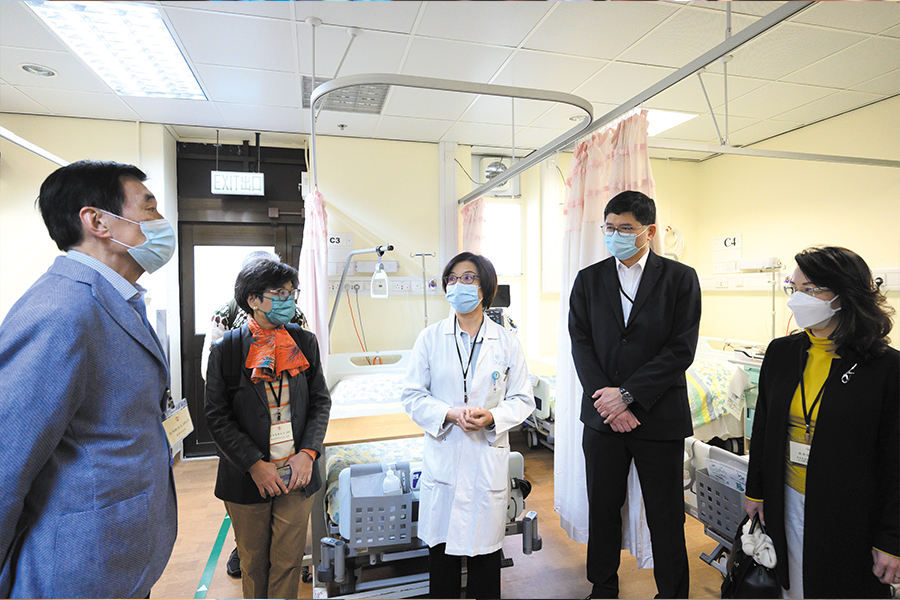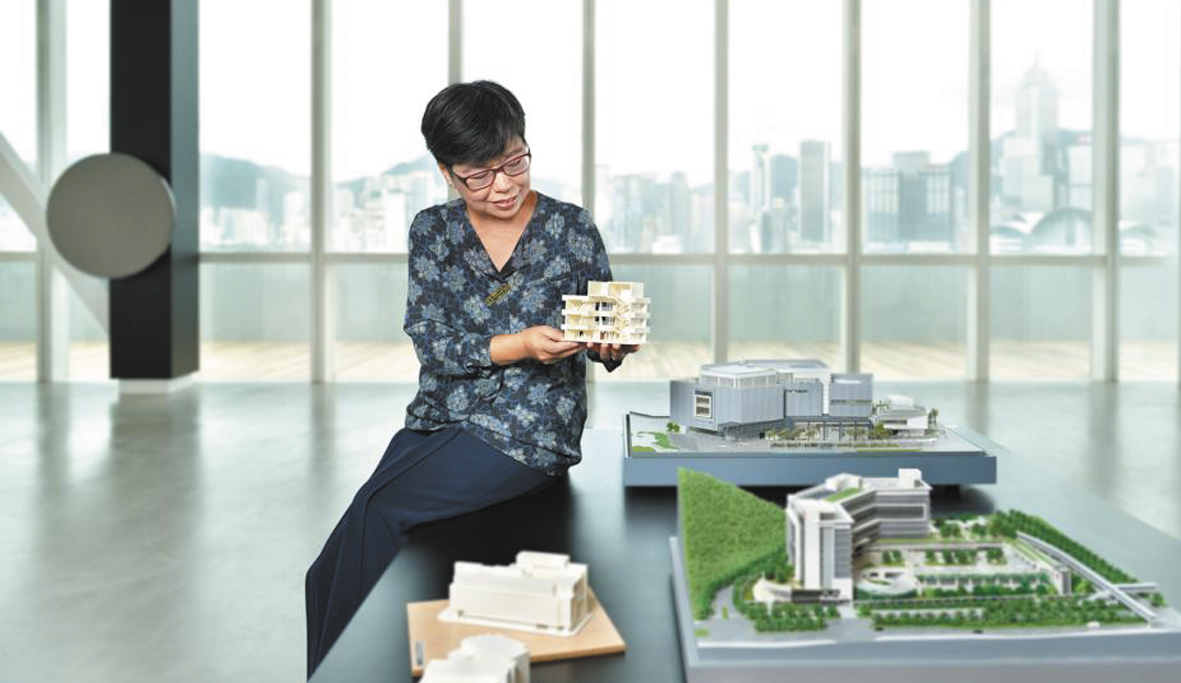Sylvia Lam: COVID-19 connects us
 Sylvia Lam joined the Hospital Authority (HA) Board in December 2022. She is a three-decade veteran of the construction industry and retired as the Director of Architectural Services at the end of 2020. One of her last projects at the Government was to build quarantine facilities, “the epidemic began in January 2020. I received a phone call on the Chinese New Year’s Day, requesting us to build quarantine facilities as quickly as possible. Eventually, the first batch of the quarantine units were completed in just 26 days. It was a memorable experience.” Stepping down during COVID-19 made Sylvia unavoidably having some retirement regrets as if a deserter, “that’s why I am very grateful for the opportunity to join the HA Board, allowing me to continue to serve the society, participate in the anti-epidemic tasks, and work together with all of you in a new capacity.”
Sylvia Lam joined the Hospital Authority (HA) Board in December 2022. She is a three-decade veteran of the construction industry and retired as the Director of Architectural Services at the end of 2020. One of her last projects at the Government was to build quarantine facilities, “the epidemic began in January 2020. I received a phone call on the Chinese New Year’s Day, requesting us to build quarantine facilities as quickly as possible. Eventually, the first batch of the quarantine units were completed in just 26 days. It was a memorable experience.” Stepping down during COVID-19 made Sylvia unavoidably having some retirement regrets as if a deserter, “that’s why I am very grateful for the opportunity to join the HA Board, allowing me to continue to serve the society, participate in the anti-epidemic tasks, and work together with all of you in a new capacity.”
In the past 10 years, Sylvia has participated in many hospital construction and redevelopment projects and has liaised closely with the healthcare industry. She says that racing against time is the biggest challenge facing healthcare construction projects, “in the past, a construction project often took at least three years to complete. However, too many medical advancements could happen during such time. It is challenging to accommodate latest medical requirements into the construction projects.”

Introducing MiC technology to build a new user-centred hospital
The epidemic provides more opportunities for collaborations between the construction and healthcare industries, expediting innovative development of the construction industry. For instance, the Modular Integrated Construction (MiC) technology is adopted in the construction of temporary hospital and quarantine facilities. “Adoption of MiC allows construction steps on site and the manufacturing of the modules to happen in parallel, thereby largely speeding up the progress. Also, we adopt telephony inspections work in factories which saved commute time.” Sylvia says that while the North Lantau Hospital Hong Kong Infection Control Centre (HKICC) was completed within an extremely short time, it is the one which could cater patients’ latest needs. For example, she notes, “mobile phones have become an indispensable part of our daily lives. However, there is no charging facilities on the bed head panels in the wards of old hospitals, which is very inconvenient for patients as pointed out by some doctors. Installing phone charging facilities doesn’t require difficult techniques indeed. With a people-centred design approach, USB chargers are incorporated at the HKICC to bring convenience to patients.”Sylvia also believes that new hospital projects shall adopt a user-centred design approach and this should be the top priority. Good communications between the construction team and healthcare personnel is therefore crucial. “When building hospitals, we must consider practicality which includes the daily needs of patients and healthcare personnel.” Participating in the construction project of the Hong Kong Children’s Hospital (HKCH) is her most unforgettable experience. “I was the Project Director of Architectural Services Department at that time and the HKCH was my first hospital project. We wanted to create a comfortable hospital environment. Taking into account of the special needs of patients such as bedside accommodation for parents, the wards of HKCH are relatively spacious than other hospitals. In addition, to provide a cozy environment for the kids, colourful motifs and decals of various themes and animals are featured on walls, doors, glass panes and ceilings of various facilities. These are very forward-looking healthcare design and set a valuable reference for the subsequent projects of the Ten-year Hospital Development Plan.”
After retirement, Sylvia continues to lead a life of active ageing, participating in sports and attending interest classes. She also gets involved in some voluntary services for her alma matar and the construction industry. “We shall use resources derived from the community for the good of the community. I see it as a precious gift that I can have the capability and energy to serve HA, the industry and the community.”
